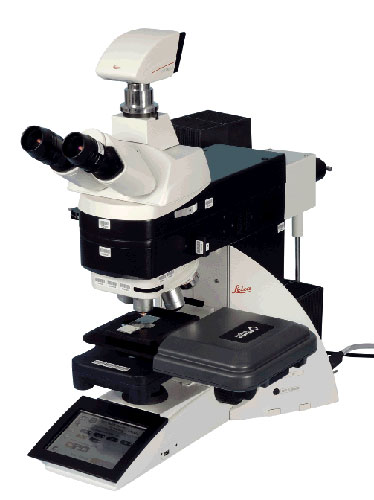Modern microscopes have become an indispensable part of medical research. The procedure for quick and precise examining of relevant sample sections has always been to adjust the slide’s position by moving the stage under the lens. However, due to technological advances, manual adjustments are quickly becoming a thing of the past. The task is now given to microdrives, although not all microdrives are created equal. To avoid mechanical play and ensure quick movement with utmost precision, a new concept uses small linear dc servomotors. With drive lengths in the decimeter range, small linear dc servomotors can boast a repeat accuracy of a few microns.
To evaluate a sample entirely (and not just at select points), a sample needs to be systematically moved while remaining in focus. Objective Imaging in Cambridge has developed the OASIS Glide Scanning Stage to meet the requirements of modern microscope techniques. The moveable stage uses the latest drive technology from German-based Faulhaber. This direct-drive linear motor sets new standards in flexibility and precision.

Microdrives are the latest devices used to avoid mechanical play and ensure quick, precise movement. A new concept uses small linear DC-Servomotors with drive lengths in the decimeter range for a repeat accuracy of a few microns.
The OASIS works with an adjustment window of 75 x 52 mm. This drive offers previously unattainable precision and speed, as well as the ultimate in smooth operation. Mechanical play, which is seen in lead screw drives, is eliminated. Along with its advanced technology, the stage also offers standard features such as a dovetail guide and screw fastening suitable for the majority of microscopes. A manual entry unit with color touchscreen and 3-axis joystick simplifies adjustments for various positions. Mechanical play and operational noise is almost completely eliminated by the drive. Exceptional vertical stability and lack of vibration accommodate the improved resolution at higher progression speeds. The system requires no maintenance and is easy to equip. At the heart of the adjustable stage are two linear motors with +/- 30 and +/- 80 mm strokes that work together in concert.

The microdrive is built within a rotationally symmetric rotor design. The rectangular, easily flange-mounted stator is designed for close to universal fit and can therefore be easily integrated with the scanning stage.
The linear drive combines the control of an electrical system with the simple construction of pneumatic cylinders. Instead of the usual surface rotor with slides and guides, the microdrive is built within a rotational, symmetric design of the rotor. The rectangular, flange-mounted stator measures 12.5 x 19.9 x 49.4 mm and universally fits with the scanning stage. The forcer rod is currently offered in six variations, each with a diameter of 6.3 mm and selectable lengths of 82, 109, 127, 154, 172 and 190 mm, making stroke lengths of up to +/- 10, 20, 30, 40, 50 and 60 mm, respectively. A non-magnetic steel case holds the self-supporting three-phase ac coil winding, as well as the rotor’s sleeve mounting, which is made of special plain bearing material. The connector plug and a printed circuit board for three Hall sensors are hidden under the upper cover. The precision sliding metal rod is equipped with super-strong permanent magnets.

The new stage with linear DC-Servomotor impresses with its smooth operation and flexibility
The mechanical properties of the linear dc servomotor for the rod force is 3.6 N, with a peak or strike force of up to 10.7 N. The acceleration for the 20 mm version equates to 198 m/s2, while the 120 mm version is 82.9 m/s2. The plain bearings for the forcer rod allow speeds to 3.2 m/s, while the operating temperature ranges from -20° to 125° C. Repeat accuracy is 40 μm. There are three linear Hall sensors in combination with the motion controller that limits the maximum positioning margin of error to 120 μm for the 20 mm version and up to 220 μm for the 120 mm model.
Expanding the field of vision combined with compact linear technology allows high levels of magnification during scanning stages, with precise positioning for these microscopes.
MICROMO
www.micromo.com
Filed Under: Microprocessors





Tell Us What You Think!